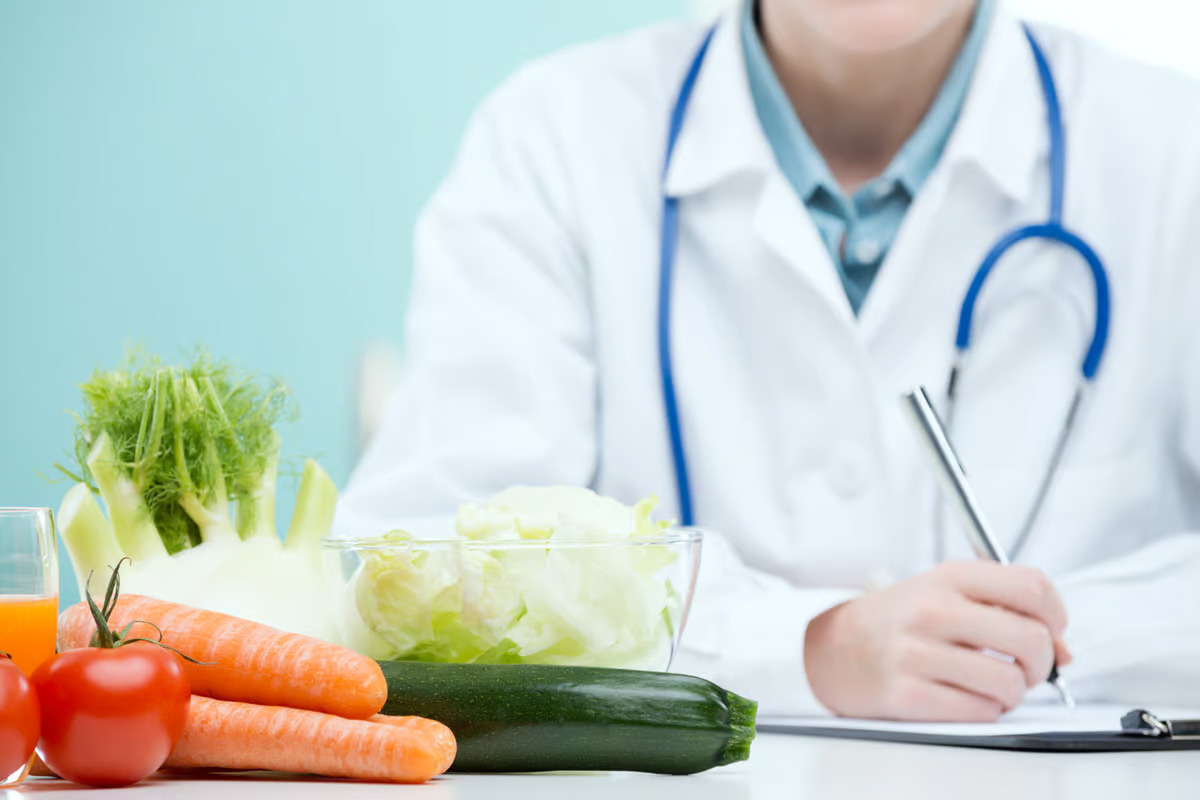 Researchers believe produce prescriptions can save billions in health costs and 296,000 cases of cardiovascular disease. Depositphotos
Researchers believe produce prescriptions can save billions in health costs and 296,000 cases of cardiovascular disease. Depositphotos
–
Using a model based on 6.5 million Americans aged 40-79 years who had both diabetes and food insecurity, as reported in three cycles of the National Health and Nutrition Examination Survey (NHANES), the simulation estimated that a national prescription program that provided free fruit and vegetables could have a significant impact on health outcomes.
The program would provide free or heavily subsidized fruit and vegetables to eligible diabetics, attempting to also address the well-studied link between type 2 diabetes and factors such as low-socioeconomic status, food security and food deserts.
Fruit and vegetables are the top recommendations for a fiber-rich ‘diabetes diet,’ along with legumes and whole grains. Studies have shown that only one in 10 Americans eat the recommended amount of fruit and vegetables daily, and this is tied more to affordability and access than personal choice. And there’s a growing push for produce prescriptions to become commonplace.
While the simulation also showed it would cost $44.3 billion to implement, accounting for screening patients, providing food and nutrition education, and associated administration, it would still be cost-effective. At $18,000 per quality-adjusted life-year gained, it would be on par with other preventative health-care measures such as blood pressure screening and control, cholesterols screening and control, and cancer screening.
“Of the strategies that can improve American’s nutrition and diet-related health outcomes, evidence continues to build that produce prescriptions are a terrific option,” says senior author Dr Dariush Mozaffarian, a cardiologist and professor of Nutrition at the Friedman School. “These innovative treatments are exciting because they can not only improve health and reduce healthcare spending, but also reduce disparities by reaching those patients who are most in need.”
The analysis also found that it could potentially save an estimated $4.8 billion in lost productivity.
A previous study from the university, looking at health records in 184 countries, estimated that poor diet was a factor in more than 14 million cases of type 2 diabetes in 2018, which was around 70% of new diagnoses of the condition across the globe.
Meanwhile, a 2021 trial found that a 15-week Fresh Prescription program involving low-income diabetics in Detroit resulted in a significant lowering of hemoglobin A1C levels, which is key in getting the condition into remission.
Last November, the US Department of Agriculture (USDA) announced $59.4 million in funding for the Gus Schumacher Nutrition Incentive Program’s (GusNIP) Produce Prescription and Nutrition Incentive programs, aimed at providing much better access to fresh fruit and vegetables.
Researcher Dr Mozaffarian is also behind Food is Medicine, a first-of-its-kind initiative aimed at research and programs that would make healthcare and access to fruit and vegetables more equitable.
“A national program could be enacted through inclusion of produce prescriptions as a covered healthcare benefit, already being piloted by several states under Medicaid section 1115 waivers as well as by private healthcare payers,” says Mozaffarian. “Our new findings help inform implementation to scale and evaluate these programs across the United States.”
“These results suggest that a national produce prescription initiative could benefit all Americans, highlighting the potential of Food is Medicine strategies to alleviate health inequities caused by food and nutrition insecurity and diet-related diseases,” added first author Lu Wang, a postdoctoral fellow at the Friedman School.
The study was published in the Journal of the American Heart Association.
Source: Tufts University
–










Most Viewed
Plasma-based noise cancelling could silence rooms, cars and planes
Upping levels of key nutrient maintains immune cell response to cancer
It’s not just France: Your phone is a surveillance device
BMW unveils $750 ConnectedRide Motorcycle Smartglasses
Ariane 5 lifts off into history with final space launch
Kimberley Kruiswagen Sprinter camper van off-grids like a GOAT
Granite discovery suggests Moon is more “Earth-like” than we thought
Revolutionary gel allows metal items to be 3D printed at room temperature
Thumbnail-sized blade puts a super-small slasher on your keychain
Ceramic walkway highlights potential beauty of 3D-printed architecture
PATS tech calls in drone strikes on greenhouse pests
Fiat embraces Riviera motoring with the Ami-like Topolino electric quad
Giant Ice Age hand-axe unearthed in the UK’s Medway Valley
Acorn stomp puts a pick dispenser on your effects pedalboard
Why is this iconic automobile going so cheap?